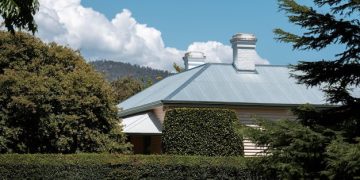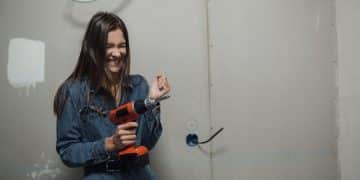DIY Water Conservation: Easy Plumbing Fixes to Cut Your Bill by 20%
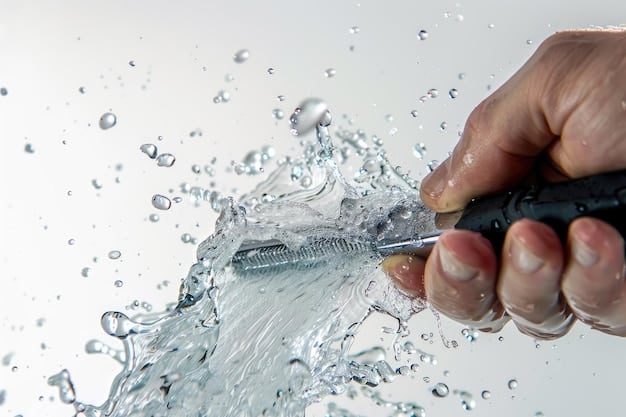
DIY water conservation offers practical plumbing fixes to reduce your water bill by 20%, including leak detection, low-flow upgrades, and efficient water usage habits.
Looking to save money and conserve water? DIY water conservation: reduce your water bill by 20% with these easy plumbing fixes is a practical, hands-on approach to making your home more water-efficient. By tackling some simple plumbing tasks yourself, you can significantly lower your water usage and save money on your monthly bill.
Easy Leak Detection for DIY Water Conservation
One of the simplest ways to implement DIY water conservation is by detecting and fixing leaks around your home. Even small drips can add up to significant water waste over time. Regularly checking your plumbing fixtures is a crucial first step.
Checking Faucets and Showerheads
Start by inspecting all the faucets and showerheads in your home. Look for any signs of dripping or leaks, even small ones. Pay close attention to the base of the faucets and where the showerhead connects to the pipe.
Inspecting Toilets
Toilets are a common source of leaks. Listen for the sound of running water when the toilet is not in use. You can also add a few drops of food coloring to the toilet tank. If the color appears in the bowl without flushing, you have a leak.
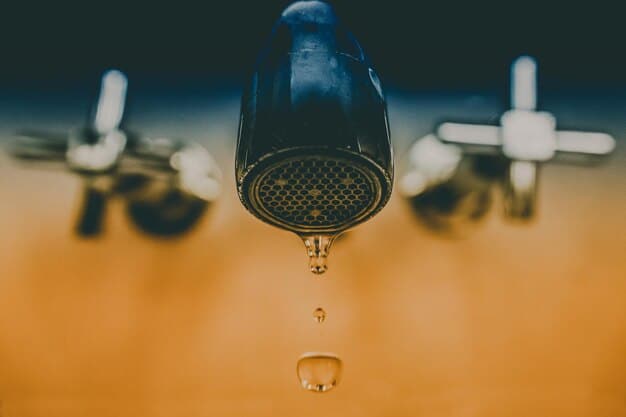
- Check Under Sinks: Look for moisture or water stains under sinks, which can indicate leaks in pipes or connections.
- Inspect Outdoor Faucets: Don’t forget to check outdoor faucets and hose connections for leaks.
- Read Your Water Meter: Take a reading of your water meter, then don’t use any water for a couple of hours. If the meter reading has changed, you likely have a leak.
By diligently checking for leaks and addressing them promptly, you can significantly reduce water waste and lower your water bill. Make leak detection a regular part of your home maintenance routine.
Simple Faucet Repairs for Water Conservation
Once you’ve identified leaky faucets, you can often repair them yourself. These DIY water conservation projects are relatively straightforward and can save a substantial amount of water.
Replacing Faucet Washers
A common cause of leaky faucets is worn-out washers. Replacing the washer is a simple task that requires only a few tools. Turn off the water supply to the faucet before you begin.
Tightening Connections
Sometimes, a leaky faucet is simply due to loose connections. Use a wrench to gently tighten the connections around the faucet base and spout. Be careful not to overtighten, as this can damage the pipes.
Repairing your faucets promptly not only conserves water but also prevents potential water damage to your home. Addressing these issues is a cost-effective way to practice **DIY water conservation**.
Upgrading Showerheads for Water Efficiency
Upgrading to low-flow showerheads is an effective DIY water conservation method. Low-flow showerheads use significantly less water without sacrificing water pressure.
Choosing a Low-Flow Showerhead
Look for showerheads that are WaterSense certified. These showerheads meet EPA standards for water efficiency and performance. They typically use 2.0 gallons per minute (GPM) or less.
Installing Your New Showerhead
Installing a new showerhead is a quick and easy DIY water conservation project. Simply unscrew the old showerhead and screw on the new one. You may need to use plumber’s tape to ensure a tight seal.
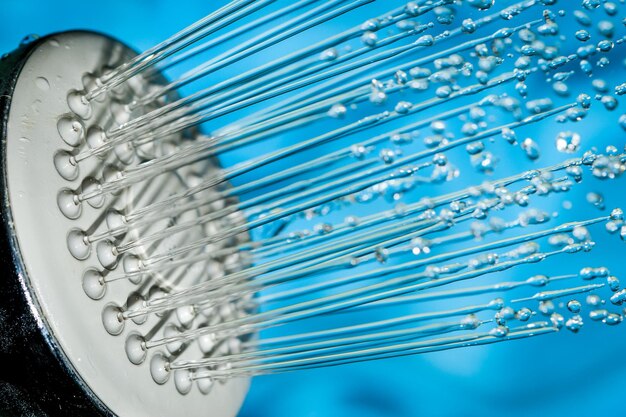
- Check Water Pressure: Ensure the low-flow showerhead provides adequate water pressure for a comfortable shower.
- Consider Features: Look for features like adjustable spray patterns and pause settings for added convenience.
- Compare Models: Research different low-flow showerhead models to find one that meets your needs and budget.
By upgrading to a low-flow showerhead, you can significantly reduce your water consumption during showers, contributing to substantial savings on your water bill.
Toilet Adjustments for Maximum Water Savings
Toilets are a major water user in most households. Making simple adjustments to your toilet can lead to significant DIY water conservation.
Adjusting the Float
The float controls the water level in the toilet tank. Adjusting the float lower can reduce the amount of water used per flush. Consult your toilet’s manual for instructions on how to adjust the float.
Installing a Toilet Tank Bank
A toilet tank bank is a device that displaces water in the tank, reducing the amount of water used per flush. You can purchase toilet tank banks at most home improvement stores.
Making these simple adjustments can lead to substantial water savings over time. It’s a practical and easy way to practice **DIY water conservation**.
Efficient Water Usage Habits for Lasting Savings
In addition to plumbing fixes, adopting efficient water usage habits is crucial for long-term DIY water conservation. These habits can significantly reduce your overall water consumption.
Take Shorter Showers
Reducing your shower time by just a few minutes can save a significant amount of water. Try using a timer to keep track of your shower length.
Turn Off the Tap
Turn off the tap while brushing your teeth, shaving, or washing dishes. This simple habit can save gallons of water each day.
- Run Full Loads: Only run your washing machine and dishwasher when they are fully loaded.
- Collect Shower Water: Place a bucket in the shower to collect water while waiting for it to warm up. Use this water to water plants or flush the toilet.
- Water Plants Wisely: Water your plants early in the morning or late in the evening to reduce evaporation.
By incorporating these water-efficient habits into your daily routine, you can significantly reduce your water consumption and save money on your water bill. Every little bit helps in **DIY water conservation**.
Insulating Pipes for Energy and Water Efficiency
Insulating your hot water pipes is another effective way to improve both energy and water conservation in your home. This helps maintain water temperature and reduces the wait time for hot water.
Choosing the Right Insulation
Select pipe insulation made of foam or fiberglass. Measure the diameter of your pipes to ensure a proper fit. Split-sleeve insulation is easy to install.
Installing Pipe Insulation
Cut the insulation to the length of the pipe and secure it with tape or zip ties. Insulate all accessible hot water pipes, especially those near the water heater.
Insulating your pipes not only saves water but also reduces energy consumption, resulting in lower utility bills. It’s a beneficial **DIY water conservation** measure for any home.
| Key Point | Brief Description |
|---|---|
| 💧 Leak Detection | Regularly check faucets, toilets, and pipes for drips and fix promptly. |
| 🚿 Low-Flow Showerheads | Upgrade to WaterSense certified showerheads for efficient water usage. |
| 🚽 Toilet Adjustments | Adjust the float or install a tank bank to reduce water per flush. |
| 🌿 Efficient Habits | Take shorter showers and turn off the tap while brushing your teeth. |
Frequently Asked Questions
▼
It’s a good practice to check for leaks at least once a month. Pay close attention to faucets, toilets, and exposed pipes for any signs of dripping or moisture.
▼
A WaterSense showerhead is certified by the EPA to use no more than 2.0 gallons of water per minute, ensuring efficient water usage without compromising performance.
▼
Listen for the sound of running water when the toilet is not in use. Alternatively, add food coloring to the tank; if it appears in the bowl without flushing, there’s a leak.
▼
Insulating pipes helps maintain water temperature, reducing the wait time for hot water and conserving both water and energy. This also prevents pipes from freezing in winter..
▼
Other water-saving habits include taking shorter showers, turning off the tap while brushing your teeth, running full loads in the dishwasher and washing machine, and watering plants wisely.
Conclusion
By implementing these DIY water conservation techniques and adopting water-efficient habits, you can significantly reduce your water bill and contribute to a more sustainable future. Start with these easy plumbing fixes today!
